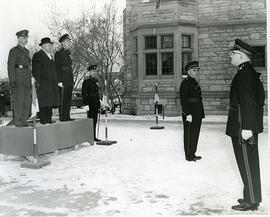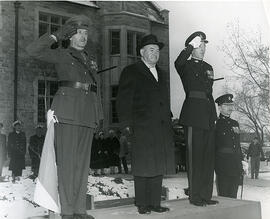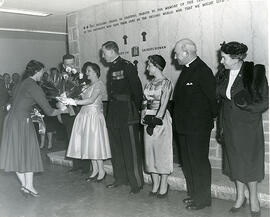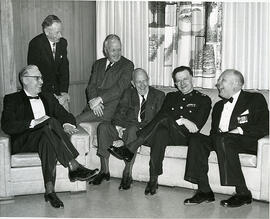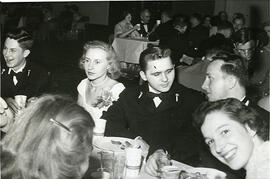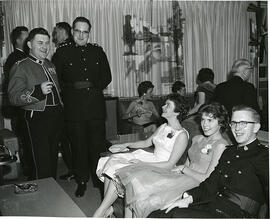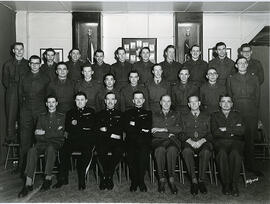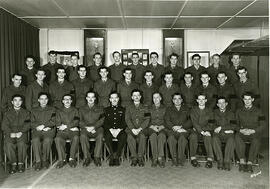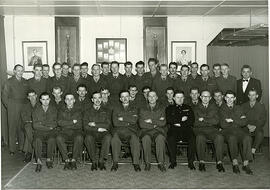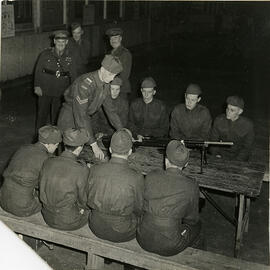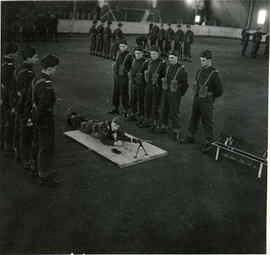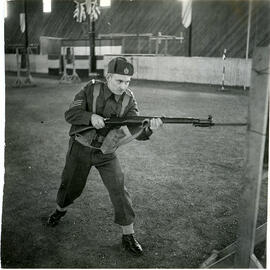Canadian Officers' Training Corps - Inspection
- A-1204
- Item
- [before 1965]
Outdoor winter scene with dignitaries standing on podium (l to r): Major John S.M. Allely; J.S. Thomson, University President; Norman K. Cram, University Registrar. E. Bruce McCorkell stands next to podium. Major John Wesley Joyce and Marcel de la Gorgendiere stand in foreground..
Bio/Historical Note: "One of the chief prices which Canada paid in the last war for her lack of preparation was the tragic waste of thousands of her best young men killed while fighting in the ranks because they had not been previously trained for a more useful career as officers. It is to prevent such a waste in any possible future war that every Canadian University is now giving facilities to its students to qualify as officers during their undergraduate course. Our own contingent of the C.O.T.C. came to life in January of this year and is already recruited up to a strength of 170." (The Spectrum, 1921) The Canadian Officers' Training Corps was a unit in the Active Militia of Canada. The Corps prepared university students for the examinations for a Lieutenant's or Captain's Commission and the universities granted course credit for COTC work. Senior commissions were held by faculty while all junior commissioned and non-commissioned ranks were open to undergraduates. Interest in the Corps declined in the 1950s and came to an end in 1964.

